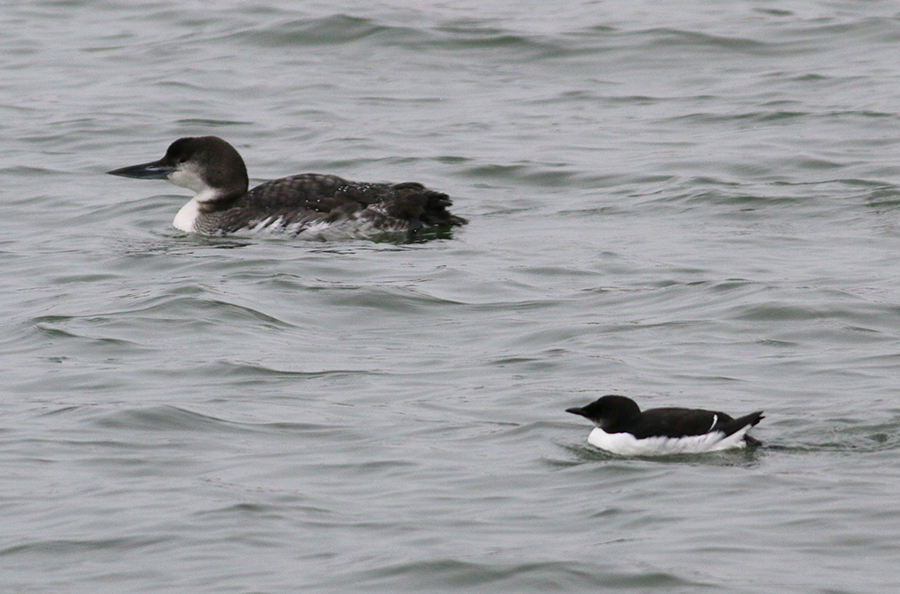It’s the final day of yet another year, so that must mean that it’s time to look back at the past year of birding. Here’s my top 10 birding events of 2015.
#10: A month in Florida. For the first time, I had the opportunity to spend a full month ‘snowbirding’, spending the month of January birding, golfing, and just relaxing in shorts in January (!) in central Florida. Two lifers were the result: Nanday Parakeet, which was easy to find based on other reports, and Wilson’s Plover, which we had to search for on multiple beaches until we finally found not one, but seven Wilson’s on Anclote Key. Add to that almost daily sightings of Roseate Spoonbills, Wood Storks, Tricolored Herons, White Ibis, and Sandhill Cranes, and it all adds up to a great time.
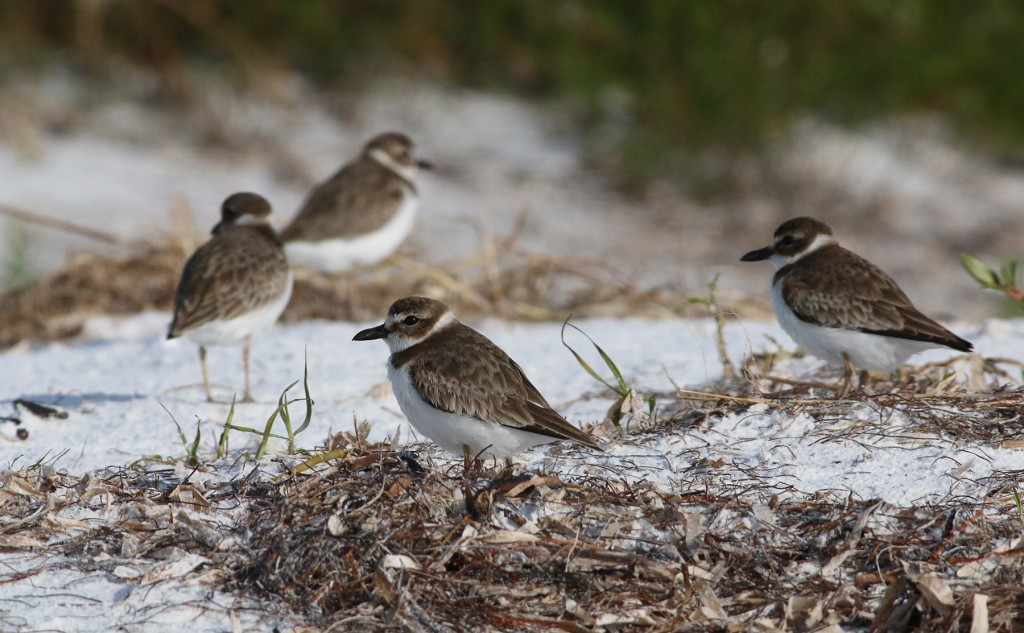
#9: Brig sandpipers bonanza. September is the tail end of shorebird season and a great time to look for the tougher shorebirds at Brig, and we were not disappointed. The highlight was a lifer Curlew Sandpiper that was found originally by Harvey Tomlinson and remained for an extended period for many birders to enjoy, but it was joined by a great combination of multiple Buff-breasted, Pectoral, and Western Sandpipers and American Golden-plovers for super views and side-by-side comparisons.
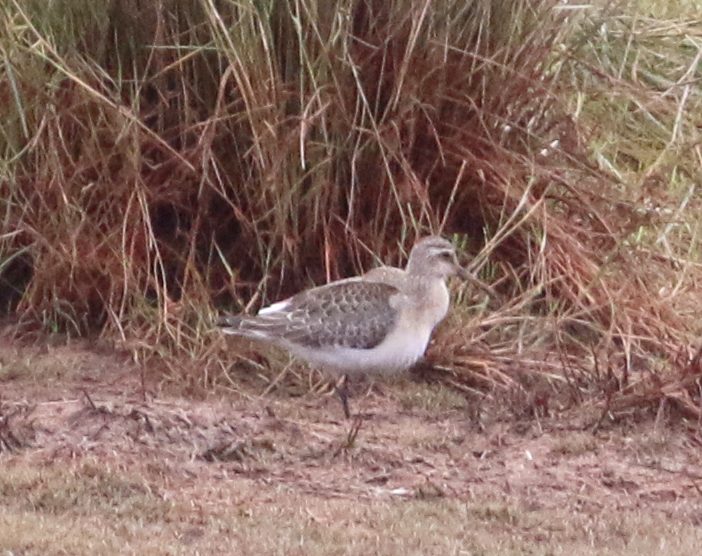
#8: White and Black Terns. It was very much a Tern year for me. I spent many hours examining and photographing Common and Forster’s Terns until I could finally identify them with confidence. It’s amazing how much fun you can have with common birds sometimes. That was followed by multiple sightings of Black Terns in the Sedge Islands, Cape May, and Brig, including great looks at feeding birds. I saw more Black Terns this year than I have seen in all previous years combined, with the highlight being the find of a breeding plumaged bird on a canoeing expedition into the Sedge Islands. Just another example of how anything can appear at my favorite NJ summer birding location. These local sightings were followed up with sightings of seven tern species while vacationing in Trinidad and Tobago in June, most of which were lifers.
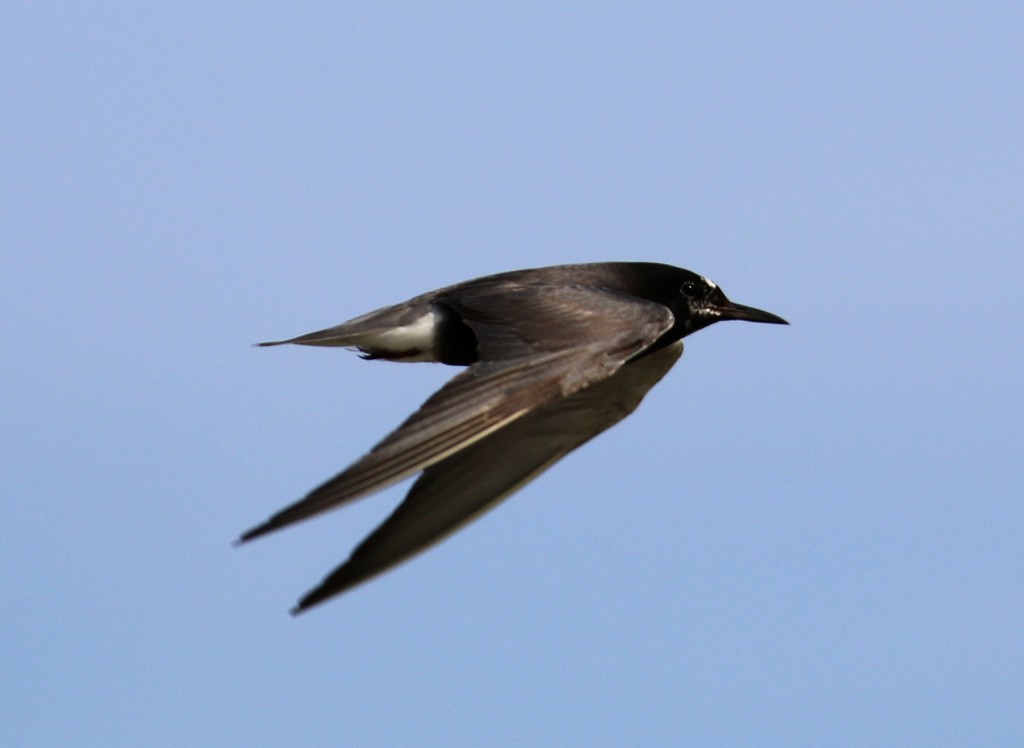
#7: Bohemian Waxwings. I have a history with Bohemian Waxwings, where I had seen them in Alaska, but the photos of those birds were lost long ago. Since then I’ve been anxious to find and photograph them in NJ. This year the opportunity arose, with a report from Sandy Hook. I was on a DVOC outing to the North Shore later that week, and at the end of the trip it was decided to try for the Bohemian. We found it, but it was a quick look without any photo opportunity. Ugh. I hoped that one might show up closer to home, and indeed, about a week later while searching for one in the Cedar Waxwing flocks at Island Beach SP, I noticed photographer Kevin Knutsen aiming his camera into the trees. He called out “Bohemian”, and about half an hour later I had the photo that I wanted as it fed along the road at eye level. Can’t beat that!
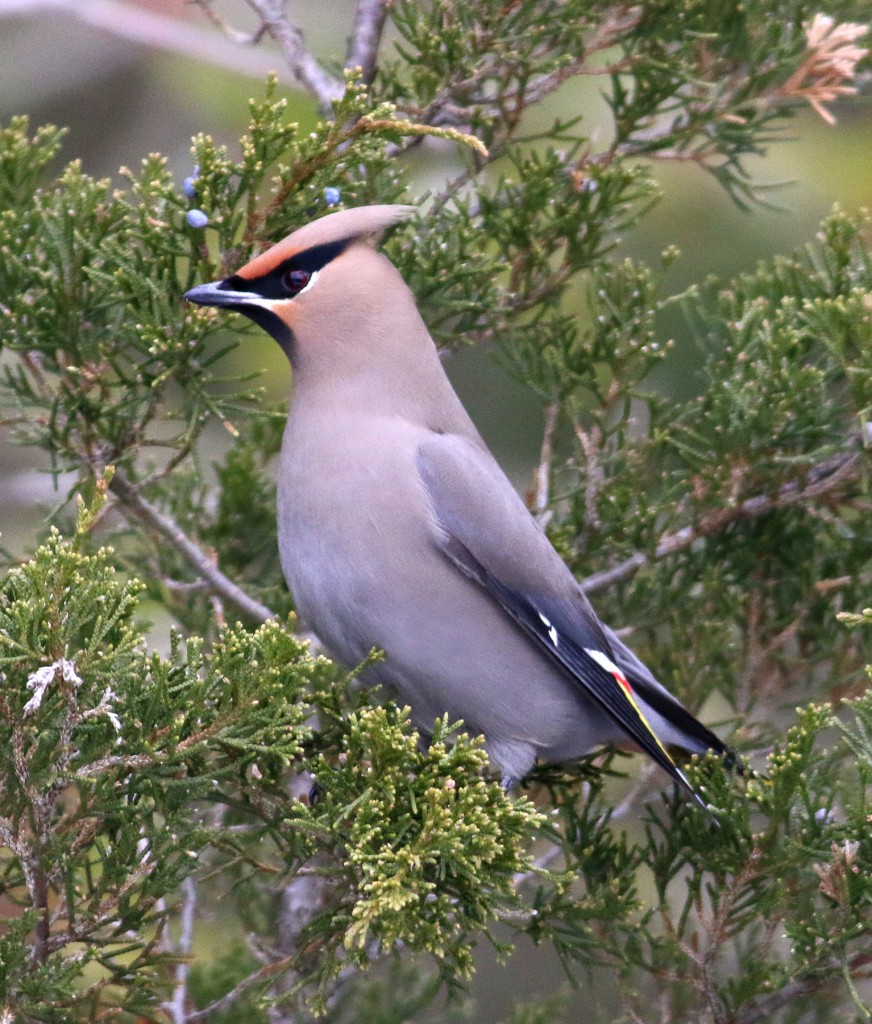
#6: Trinidad and Tobago excursion. Due to my recent transition into retirement, I haven’t had any birding-specific vacations outside the US for several years. 2015 was the year to end that streak. A 9-day trip to T&T yielded 66 lifers, including a few very memorable birds. Bearded Bellbird is now my favorite bird of all time, we documented the first Amethyst Woodstar ever seen at Asa Wright Nature Center (and only the second ever in Trinidad), saw Audubon’s Shearwater resting on land behind our hotel, and had unexpected sightings of White-tailed Tropicbird and Western Reef-heron. It was a wonderful trip.
#5: Gulling at Florence: Glaucous Gull has been a long-standing thorn in my side: one of the birds that I should have seen by now, but somehow it eluded me. I decided to spend some time in the bitter cold of March in Florence NJ, along the Delaware River. My first attempt came up empty, but with nice Iceland and Lesser Black-backed Gulls as consolation. The next trip was a success though, with clear views of my Glaucous nemesis. It was a great feeling. 2016 is the year to find my new nemesis: Philadelphia Vireo.
#4: Bell’s Vireo. This year I spent more time in Cape May than in previous years, including a four-day October house rental right on Lake Lily. Three days later a Bell’s Vireo showed up at Higbee’s Beach WMA. It was prime migration time, so I headed back down there, and was able to see it on two separate trips. It was a great example of how seeing a bird under this kind of circumstance could help to find it in the future, keeping an eye out for its blue legs and fondness for staying low in thickets.
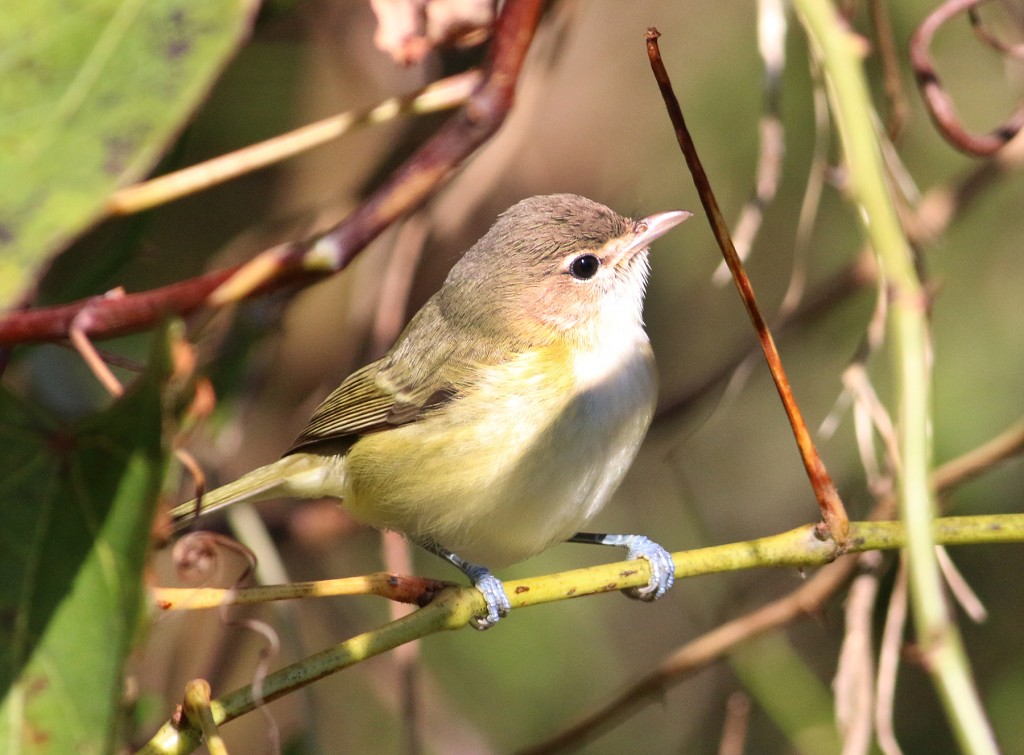
#3: Phalarope Day at Whitesbog. August is shorebird time in NJ, and it was a particularly good year for them in Whitesbog that included lifer Baird’s Sandpiper and an adult White Ibis. But the highlight was a day that started out very ordinarily, but ended up being “Phalarope Day”. I went there alone, and after scanning the flats I started comparing notes with three other birders (Larry Zirlin, Jim Shill, and Ernie Hahn). It started innocently enough, with a bird that Ernie saw and I wasn’t sure of that Larry and Jim confirmed to be a Wilson’s Phalarope. As we watched, it would feed, fly occasionally, get lost, appear again, etc. In other words, fun birdwatching. Eventually we went to the other side of the bog to get documentation photos and it miraculously morphed into a Red-necked Phalarope! The Wilson’s was still in view, so we had two phalaropes, both which are rare-to-uncommon for NJ, in view at the same time. It was a great example of team birding; I certainly wouldn’t have found and identified them both by myself.
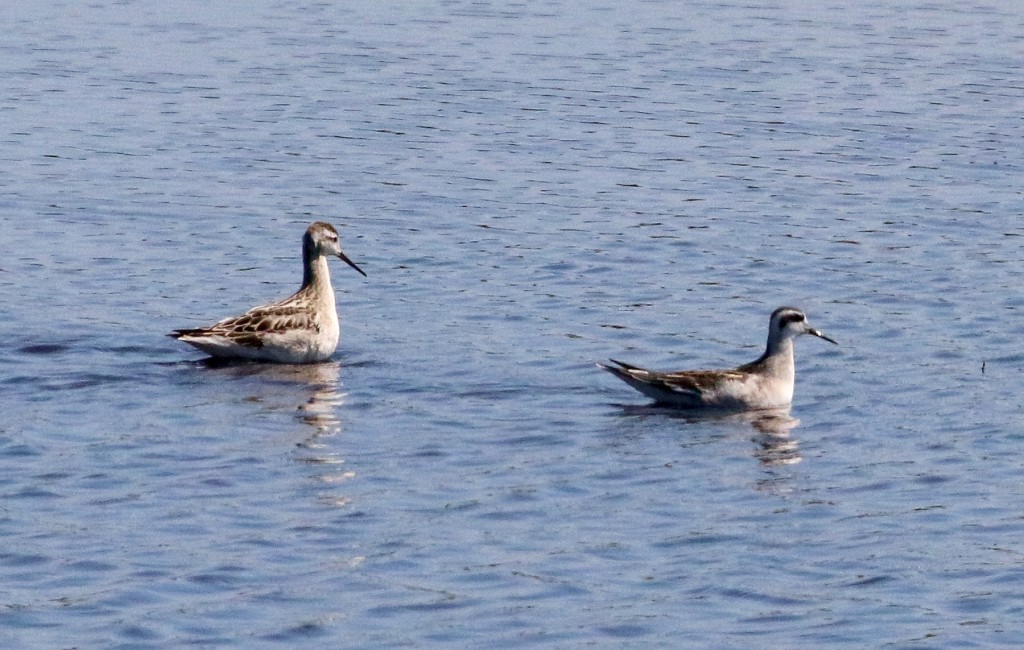
#2: Black-headed Gull + King Eider = winter fun. While I was in Florida in January, there were great reports of Razorbills appearing in NJ. I was somewhat envious, so after returning back to the frigid north, I decided to do some “sits” at Manasquan Inlet and hope for some nice birds. One fine day while sorting through the numerous scoters just off shore I was able to find a drake King Eider in the mix. That was super, but was topped by a fly-by Black-headed Gull a few minutes later. Nobody else was there. What a great pair of birds and a super welcome back to NJ!
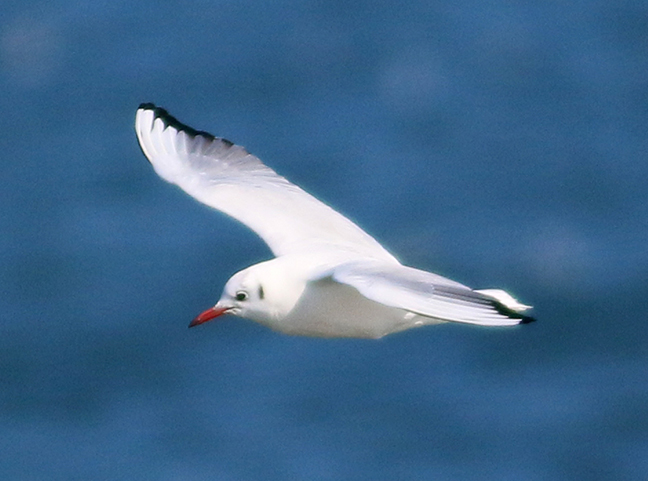
#1: Thick-billed Murre. February was a good month for me at Mansaquan Inlet, topped off by sighting of my lifer Thick-billed Murre. A Murre was spotted the previous day at Barnegat Inlet ~25 miles further south, but instead of chasing it, I decided to sit at the mouth of Manasquan Inlet. I could tell that something was up, as the inlet was FILLED with many more Common Loons than normal. The loons were joined by a pair of Red-necked Grebes near the mouth, but after moving further inward, I spotted an alcid swimming in. The channel is not very broad, so it yielded awesome scope and binoc views and photo ops. As with the Black-headed Gull, no other birders were around. My first NJ alcid was a great one.
